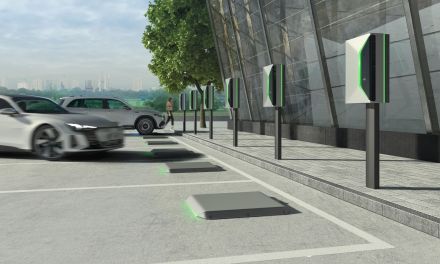Electric-vehicle startup Arrival is partnering with ride-hailing giant Uber to develop an affordable, purpose-built electric vehicle (EV) for ride-hailing drivers. The Arrival Car is expected to enter production in Q3 2023.
It will address the global need to shift ride-hailing and car-sharing services—with over 30 million estimated drivers across the ride-hailing sector—to electric to reduce emissions and improve air quality in cities, says Arrival. In the UK, a typical ride-hailing vehicle will, on average, drive 45,000-50,000 km a year, versus 12,000 km for a typical vehicle, according to Arrival, so its operation can contribute more to overall clean emissions.
“We are confident that electrifying ride-hailing vehicles will have an outsized impact on cities, and we are keen to support drivers as they manage this transition,” said Tom Elvidge, SVP Arrival Mobility UK. “Arrival Car will be designed around drivers’ needs to create a vehicle that is affordable, durable, and desirable. We have a great partnership with UPS to create a best-in-class electric delivery vehicle, and we hope to replicate that success with Uber as we develop the best possible product for ride-hailing that elevates the experience of the passenger and improves drivers’ health, safety, and finances.”
Uber has committed to becoming a fully electric mobility platform in London by 2025 and by 2030 across North America and Europe. Toward that aim, Uber Green recently launched in London, giving passengers the ability to select a fully electric vehicle at no extra cost, while drivers pay a lower service fee. So far in London, more than 3.5 million trips have taken place in fully electric vehicles, helping to reduce emissions and improve air quality in the capital. Uber is committing to double the number of drivers in EVs by the end of this year as part of the roadmap for all cars on the app to be fully electric by 2025.
“As our cities open up we have an opportunity to make sure that urban transport is cleaner than ever before,” said Jamie Heywood, Uber’s Regional General Manager for Northern and Eastern Europe. “Uber is committed to helping every driver in London upgrade to an EV by 2025, and thanks to our Clean Air Plan more than £135 million has been raised to support this ambition. Our focus is now on encouraging drivers to use this money to help them upgrade to an electric vehicle, and our partnership with Arrival will help us achieve this goal.”
Arrival will collaborate with Uber drivers in the design process over the coming months to ensure that its car reflects the needs of professional drivers and their passengers, with the final vehicle design expected to be revealed before the end of 2021. The Arrival Car is expected to prioritize driver comfort, safety, and convenience, while ensuring that passengers enjoy a premium experience.
Following the launch of Uber’s Clean Air Plan in London two years ago, more than £135 million has been raised to support drivers for the cost of switching to a fully electric vehicle. Its focus is now to encourage drivers to apply for EV assistance under the Clean Air Plan—helping to clean up urban transport and drive a mass market for EVs.
Arrival’s Car will join its previously announced commercial products, the Bus and Van, to provide cities with a multi-modal zero-emissions transportation ecosystem that they require to meet their sustainability goals over the coming years.
The Bus was first shown in June 2020 to elevate the public transportation experience and ensure strong economic benefits that reduce the reliance on government subsidies. Designed with an exceptional passenger experience front of mind, the Bus is equipped with features that promote a positive perception of public transportation and create an environment evoking a sense of space, cleanliness, and wellbeing in a world with a heightened awareness of hygiene and personal space.
Arrival expects its Van to set a new standard for commercial vehicles by introducing a fully electric van that excels across both payload, at 1975 kg, and cargo volume, at 2.4 m3 per m length, at a price comparable with fossil fuel vehicles, and with a substantially lower Total Cost of Ownership. The Van is expected to start full production in Q3 2022.
The integrated transportation ecosystem will create cleaner, more equitable, mobility solutions for people living in cities that Arrival believes will have a radical impact on their health and opportunities. Ride-hailing plays a key role in creating accessible and efficient multi-modal transportation systems, reducing both total numbers of vehicles in cities as well as emissions, which is expected to have an oversized impact on real-world pollution globally.
Arrival says its Microfactories will enable decentralized production in cities around the world, producing vehicles close to areas of demand, using local talent, and paying local taxes. This strategy also enables the production of vehicles specifically for the region to service the many markets seeing rapid growth in ride-hailing and car-sharing.
Arrival, which went public in March, says that the Arrival Car is the realization of the Small Vehicle Platform referenced in the company’s investor deck. In addition, the company says that it will explore a strategic relationship with Uber in key markets including the UK and EU.


















































































